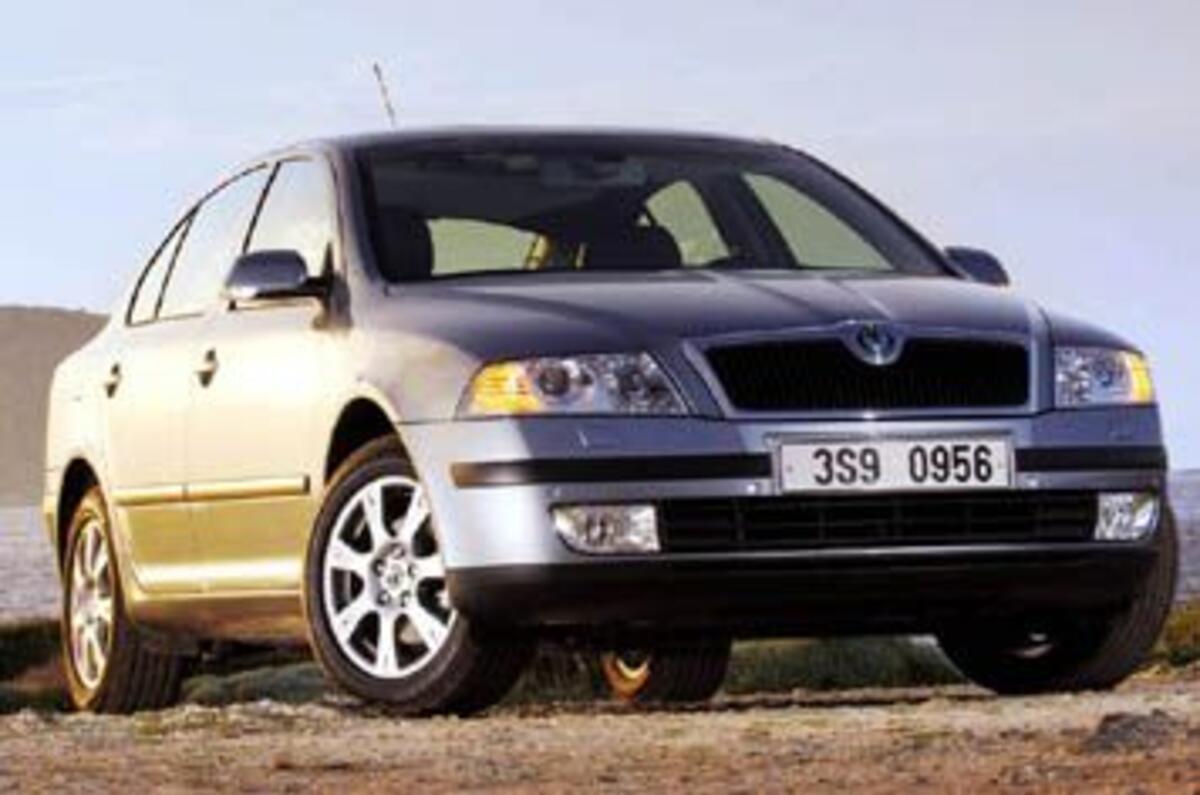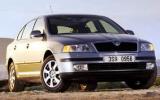Launched in 1996, the Skoda Octavia was the car that finally persuaded buyers to take Skoda seriously in the Western world. Based on the Volkswagen Golf, it was conservative, capacious, capable and a big success. Over one million were built over the next six years, as the Octavia became the mainstay of the Skoda range.
Given this popularity, it’s no surprise to learn that the new Octavia is an evolution of the old. The styling, for example, could have been plucked from the same mould. The bold, slightly pompous new grille is in keeping with the company’s newfound confidence, but the simple angles and prominent shoulder lines are instantly recognisable.
The rear overhang has been extended so that a three-box profile can be combined with hatchback versatility. It’s in keeping with Skoda’s promise of offering ‘an extra bit of car’ for the same price as its more compact competitors. This is an admirable policy, but the bulbous boot looks ungainly and the rear elevation is also Euro-anonymous, despite the signature C-shaped tail lamps.
The overall shape has more presence than its predecessor and should age well, but its maturity also means that it is less likely to appeal to a younger audience. While the Golf is ageless, the Octavia is self-consciously a car for an older customer. Whether this will hamper Skoda’s bid for conquest sales remains to be seen.
The conservatism of the exterior is also slightly at odds with the stylish, contemporary cabin. It can be said without exaggeration that the design and quality of the cabin is at least a match for the latest Golf’s. Indeed, the handsome sweep of the dashboard and the stylised instrument panel makes the Golf seem austere.
No one stepping into an Octavia will feel like they have chosen a value alternative. The top of the dash is swathed in soft-touch ‘slush’ plastics, the fabrics are good and some of the attention to detail is terrific. The door bins, for example, are moulded to hold a one-litre drink bottle and the chrome door handles are rubber-backed to enhance their tactile appeal.
Given these pleasing trinkets, it’s a surprise to note that the grab handles aren’t damped, VW-style. Skoda’s official line is that their customers don’t care, but it’s impossible not to conclude that the snap-shut handles are a sop to the company’s German masters. It is, after all, not wise to bite the hand that feeds you.
The wheelbase of the new car is 66mm longer than the old, and identical to that of the new Golf. Skoda’s engineers also claim that the seating positions for the Octavia and Golf are the same, which makes it even harder to explain why the Octavia is so much more spacious than its cousin. The Golf’s rear quarters are roomy, but those of the Skoda are nothing less than palatial. There’s enough legroom for two six-footers to sit comfortably in tandem and the headroom is generous. The engineers were surprisingly coy about how they’ve achieved this feat but the answer must lie in clever detailing.
Equally impressive is the boot capacity. This was a strength of the old Octavia and the boot volume of the new model has grown by 36 litres. With the rear seats in place the capacity is 560 litres, which grows to 1350 litres when the split/fold rear seats are folded down. This trounces the Golf’s 350/1184 litres, and even the Ford Mondeo can muster just 500 litres.


















Add your comment